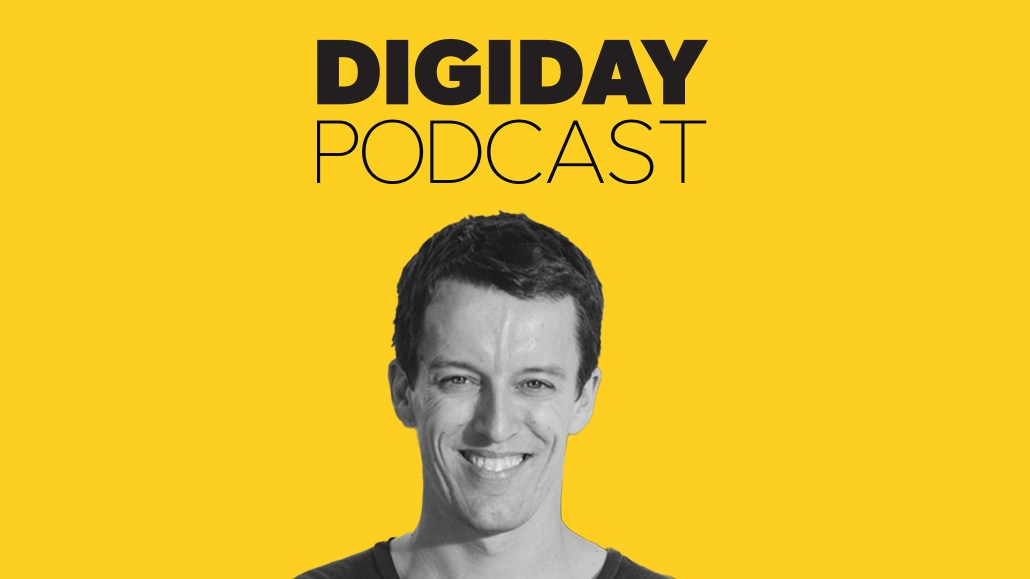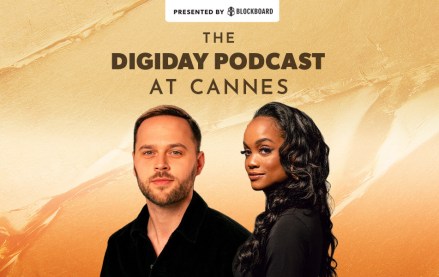Martin Pagh Ludvigsen, Goodby, Silverstein & Partners’ director of creative technology, on the ‘philosophy’ of the fediverse

Subscribe: Apple Podcasts • Spotify
Today’s social media landscape is an increasingly fragmented one, where legacy platforms are faltering, giving way to challengers. Within that landscape, social media advertisers and professionals are tasked with experimenting and potentially building audiences as they go. Enter the fediverse.
The fediverse is best described as a group of social media networks that are independent but still able to communicate with one another. (Read our WTF is the fediverse here.) Theoretically, brands wouldn’t be under the thumb of today’s monolithic social media platforms, and could instead have more control over their communities. Back in July, Meta’s Threads announced a fediverse integration, potentially bridging the gap between advertisers and the fediverse.
While advertisers are still scratching the surface of the next iteration of social media, Martin Pagh Ludvigsen, director of creative technology and AI at Goodby, Silverstein and Partners is ready to pitch the innovation to clients, hopeful for innovation in the space.
“I’d love to conduct some experiments in the fediverse with some of the brands that we have in house,” he said on the most recent episode of the Digiday Podcast. “But in order [for clients] to give us permission to do that, they need to find out what the benefits could be for them.”
Below are highlights from the conversation, which have been lightly edited and condensed for clarity.
Fragmentation and frustrations in the current social media landscape
Twitter is an example of a platform that has been seen as the town hall for the internet for a really long time, and has fueled a lot of amazing conversations. It’s also, however, a platform that over the years has struggled with speech that not everyone deems acceptable. Whatever your opinion is on that, I think it’s fair to say that a lot of brands have found Twitter to be not necessarily the safest place to have a presence in the past. So the problem is, if you are a brand or an individual consumer, there is that, ‘Okay, I’m done with this, this platform has become too toxic for me, I want to move on,’ you absolutely can move on. But when you do that, you lose all the value that you have built up on that platform over time. So if you’re a brand with 500,000, or a million followers on Twitter/X, and you decide not to use the platform anymore, that audience is just gone. If I move somewhere else, I have to start over. And that’s really problematic. In a fediverse platform, the audience no longer belongs to the individual platforms, at least, that’s the philosophy.
Meta promises Threads in the fediverse
Mark Zuckerberg said in an interview that they believe that they have the capabilities to build one of the best platforms, and that is how their ambition of reaching one billion active users can be accomplished. And say what you will about them, they’re pretty good at building social networks, and have been for a really long time. So I think they have the potential to make good on that promise. The fact is that they built up a lot of users on Instagram over the years. When you first joined Threads, it was really, really easy because you just used your Instagram profile to create a new one. No one else will be able to have that kind of a head start as they join the fediverse. But the bigger the volume of user profiles that exist in the fediverse, the more interesting it becomes for someone else to set up a platform there, including a brand.
Advertising in the fediverse
They’re obviously gonna roll out an advertising product at some point. I’m not fully up to speed on [Meta’s plans for ads in the fediverse]. But we know what’s going to happen at some point because at the end of the day, that is the revenue model for all of Meta. So it will happen at some point. Advertising paid media is not supported per se by ActivityPub. That means that the individual platforms probably have to figure out how to do that. But I also think that the protocol is open enough that it is actually possible to exchange paid media units that can travel between platforms in the fediverse. And of course, the organic content that brands create is also something that can sort of travel freely in the fediverse.
More in Podcasts

Michelle Khare on building Emmy-worthy content — one challenge at a time
Michelle Khare’s not just taking on wild YouTube challenges — she’s eyeing an Emmy while she’s at it. Tune in for a peek behind the curtain at how she’s leveling up creator content.

How TikTok’s ‘The Secret Lives of Mormon Wives’ landed on Hulu, with Select Management Group’s Danielle Pistotnik
The talent manager and executive producer of “The Secret Lives of Mormon Wives” joined the Digiday Podcast to break down the process of the reality show finding a home on Hulu.

Digiday Podcast at Cannes: Former Bachelorette Rachel Lindsay makes the case for creators
Between panels and parties, creators are looking to get face time with ad execs, brand marketers and partners like Spotify. However, rather than coming to the Croisette to strike deals, they’re playing a long game.








